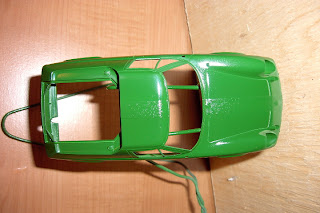


The cam cover highlights were painted flat aluminium and the spark plug holes flat red. The flat red from Tamiya is a real pain: it is as clear as their flat black and strips itself when it dries a bit too much on the brush. Many coats have been necessary to get a dark finish, not really astounding even by my poor standards!

The various accessories were painted in different shades of metalic paints: chrome aluminium, flat aluminium, silver titanium, and Citadel's chainmail and boltgun metal. The golden bits are from Citadel too, but I should have made a mix of gold and mithril silver to cut the brightness of the paint a bit.








































